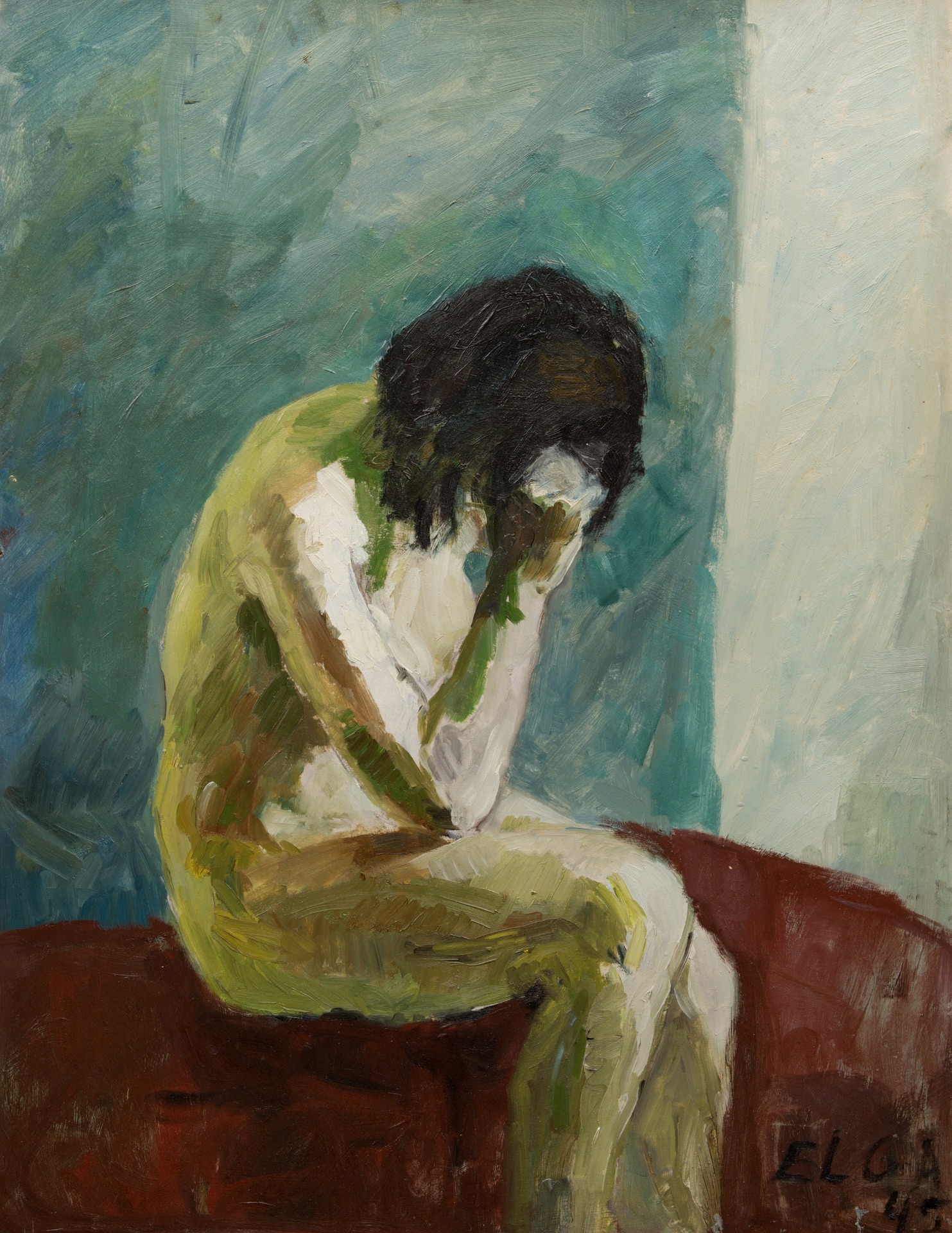About Elga Sesemann
Elga Charlotte Sesemann, born 28 March 1922 in Vyborg,
Finland (now Russia), dead 21 January 2007 in Helsinki, Finland,
was a Finnish painter.
Elga Sesemann studied at the Finnish Art Academy, Helsinki 1940-1943 and The Free Art School, Helsinki 1943-1944.
She was a prominent expressionist and colourist already in the 1940's in Finland. Instead of a brush, she often used a palette knife. She had her first exhibition 1943 and her first solo exhibition 1945. She participated in more than one hundred exhibitions in her lifetime.
Her paintings have been exhibited in Helsinki and all major Finnish towns, and also in Stockholm, Oslo, Stuttgart, Peking and New York among others.
Her work is represented at Ateneum ( Finnish National Gallery ), Helsinki and Moderna Museet in Stockholm, and many others.
When the war broke out 1939, Elga was seventeen years old. In her school, in Vyborg, only about 60 kilometers from the Soviet/Russian border, the principal came in to the class room and declared that everybody had to go home immediately and school was closed until further notice. It was the happiest day in Elga's life!
Elga and her family were evacuated from Vyborg to Helsinki.
Elga Sesemann married the painter Seppo Näätänen during the total solar eclipse in July 1945.
They had a studio and apartment in Brändö, Helsinki. In the late 40's they moved to the house they had built in Ruovesi, just across the lake of Akseli Gallen-Kallelas house, about 80 kilometers north of the city of Tampere.
The house had no electricity, water, telephone or even a road, therefore they lived partly in an apartment in the village of Ruovesi during wintertime.
Her autobiographic novel Kuvajaisia - Erään omakuvan
taustamaisemaa ("Reflections - the background of a self
portrait") was published in 1959. It is mainly based on her childhood.
When Seppo fell ill with cancer, Elga and Seppo travelled in 1964 to India, where Seppos sister lived. They made a stop over in Egypt.
Seppo died 30 July 1964 and was buried in Bangalore, India.
Elga Sesemann made her living as an artist all her life. She also made commissioned portraits. She was granted state artist pension in 1982.
She hardly painted at all after 1995 due to eye diseases. When Elga was 80 years old, 2002, she made her poetry debut by publishing a collection of poems.
The 21 January 2007 Elga Sesemann died in a hospital in Helsinki as a result of pneumonia. The funeral took place at the German Church in Helsinki and she is buried in the family grave at Sandudden's Cemetary, Helsinki.
Elga's family, on both sides, have German heritage. She spoke German with her mother, Russian with her father, Finnish with her husband, which became her first language. She also spoke Swedish.
Elga's father, Edgar Sesemann, was a technical director at a linseed oil factory in Tienhaara outside Vyborg, born 1889 in Tbilisi, Georgia (then Russia), dead 3 May 1939 in Tienhaara, Vyborg (then Finland).
Elga's mother was Olga Sesemann, born 1895 in Gori, Georgia (then Russia), dead 1981 in Helsinki.
Elga was self-willed and uncompromising. When the principal of the Art Academy 1943, "corrected", with his own brush with pink colour, the green skin tone of Elga's nude, she changed school. She found her own path in life.
The work of Elga Sesemann has been greatly appreciated and received attention during recent years, partly due to significant exhibitions by Ateneum (Finnish National Gallery, Helsinki), HAM (Helsinki Art Museum), Tampere Art Museum, Millesgården in Stockholm, The National Museum of Western Art, Tokyo and Scandinavian House in New York.
There is now an extended version of "About Elga Sesemann" available, there are over 100 pictures/photos.



